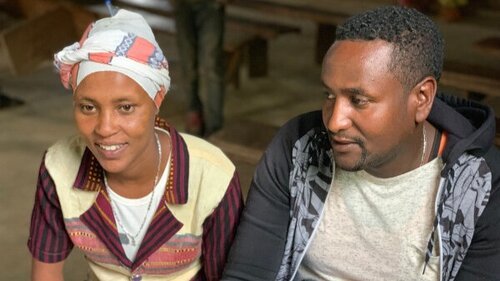Tesfaye’s story
“A child will be stronger and more well-educated if parents have fewer children close together.” Women and Children First has been supporting families in the Malga District of Ethiopia with their decision making around family planning. This has led to 88% of all pregnancies being planned - a 28% increase in just 4 years.
In Ethiopia, women rarely get the opportunity to discuss family planning. This means they have less ability to decide if, when and how many children they have.
This can put immense financial, mental and physical strains on the family.
This can cause severe stress for mothers, due to financial problems, health issues, and not being able to give enough attention to all their children.
Tesfaye and her husband, Zinu, learned about how short spacing between pregnancies increases health risks for the mother and baby from their local women’s health group.
They were planning to leave a 1 year gap between their first and second child. However, they now plan on waiting 3 years to ensure that Tesfaye, their children and the whole family can thrive.
Tesfaye and Zinu said: “Before the women’s health group we didn’t speak about family planning.
“If women didn’t have a baby after a year the husband would often look for another wife.
“We have realised that families who have lots of children in a short space of time often struggle to provide food, education and opportunities to all of them.”
They are now advising other families about these issues. Tesfaye tells her friends about the family planning services that are available at their local health facility.
“We are giving advice to our neighbours. A child will be stronger and better educated if the parents have fewer children close together.”
This story is common across our women’s health groups in Malga District in Southern Ethiopia. These groups have succeeded in:
Raising awareness of services available at local health facilities
Encouraging men to support their partners’ reproductive health
Inspiring couples to make family planning decisions together
Since our women’s health groups began meeting, the number of planned pregnancies has increased to 88%. This is much higher than the national average of 70%.
Women and Children First thank all our supporters for their help in this work.

